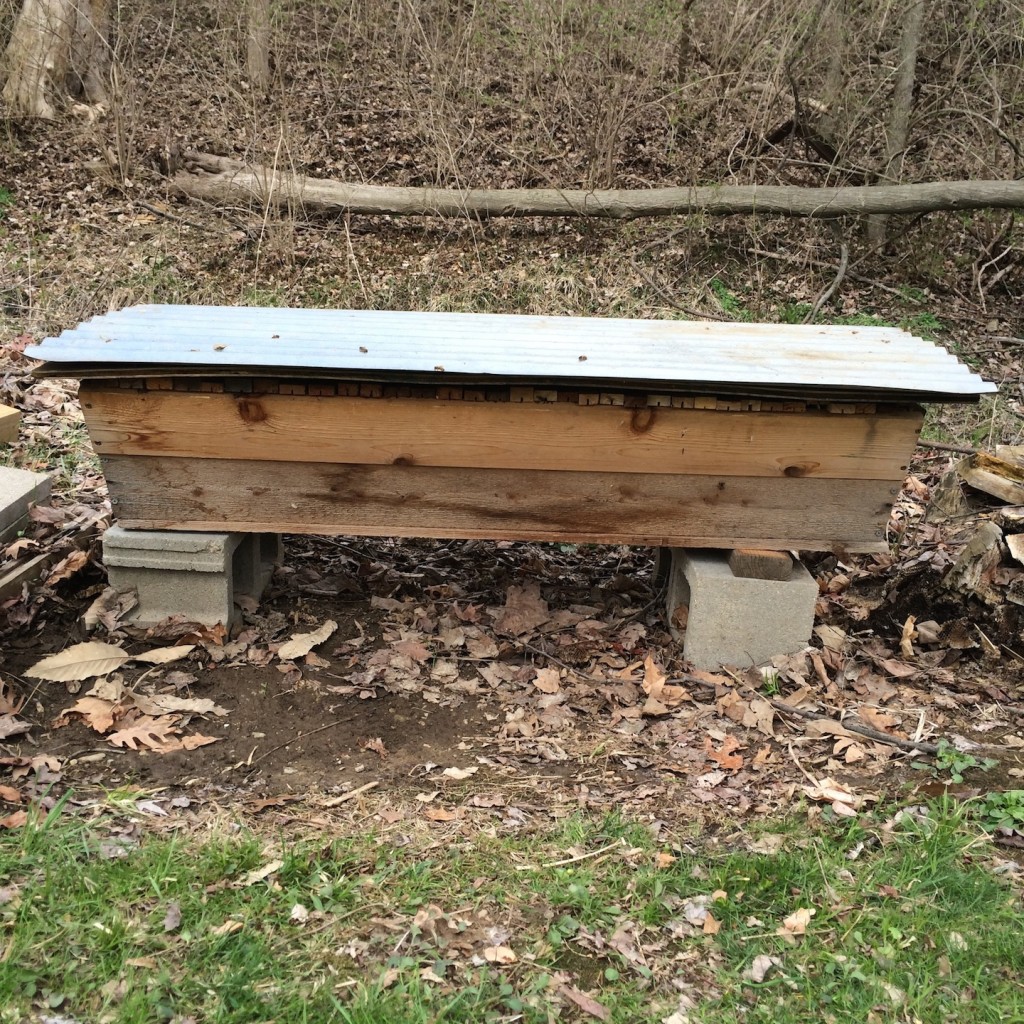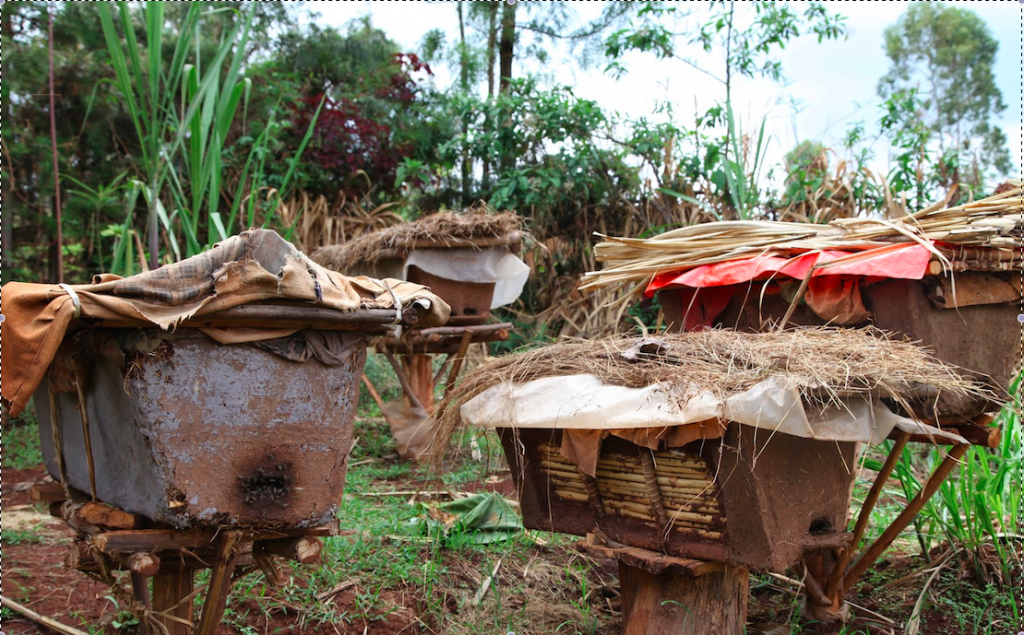
I simply love these hives because they’re made from indigenous material and without power tools. I plan to make a few using bamboo and thatch.
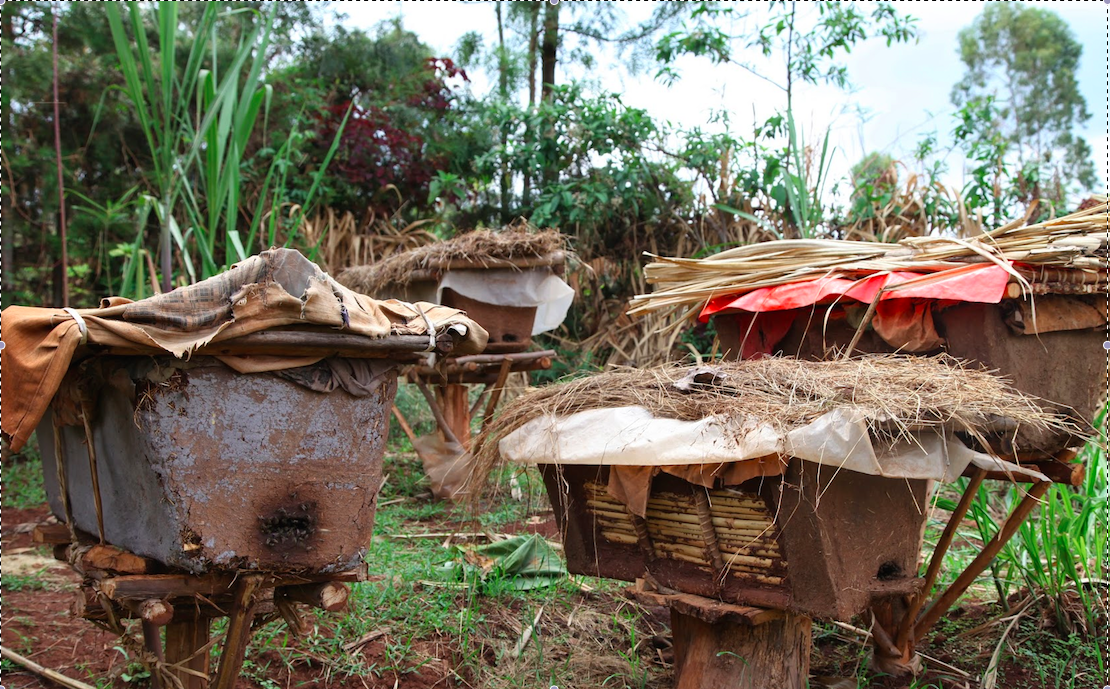
The Last Days of Summer Before the First Frost
BY TIM BOWLING

Reader, plant wildflowers. Plant wildflowers for as far as the eye can see. Go wild. Live it up.
Also, read this NYTimes article.



This is my coffee shop. I stop in here almost every morning at 5:30am. And again at 7:15am. Sometimes for lunch. Sometimes for an afternoon cappuccino. The people who work there are my friends. As are many of the regulars who love Coffee Please, too.
Coffee Please is currently the only public place to buy your local TwoHoneys honey. Go there. Buy honey. Enjoy a cappuccino. Look for me.
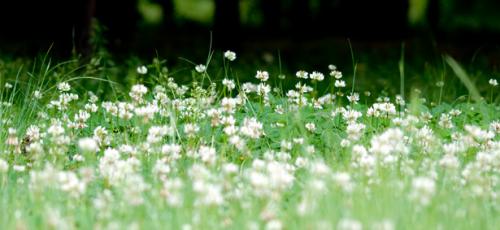
What makes TwoHoneys honey different from almost any (even any local) honey you can find? The answer, dear Reader, is single-hive honey. Let me explain.
This is what makes single-frame honey unique: The honey in each frame tastes like whatever was blooming when the bees stored it. For instance, if goldenrod and asters were blooming when the bees stored nectar in that particular frame, then the honey harvested with that frame will taste like goldenrod or aster. Each frame tastes unique to whatever was blooming. The TwoHoneys honey you purchase tastes unique to whatever was blooming where that hive lives that season that year. It’s always a wonderful experience because YOU CAN TASTE THE DIFFERENCE.
We can’t always identify the flower we taste in the honey, but we can certainly taste the uniqueness.
And, like wine, the honey from that hive this year will taste different from the honey from that hive next year. Because the weather differs and different flowers bloom in different strengths. This year, clover bloomed for a long long time. And Queen Anne’s Lace was prolific in the wild countrysides. And right now, the goldenrod is yellowing the universe. So, the early honey we bottled tastes like clover. The mid-season honey like Queen Anne’s Lace, and the dark fall honey like deep-yellow goldenrod. And, Reader, these flowers taste different. And you can experience it.

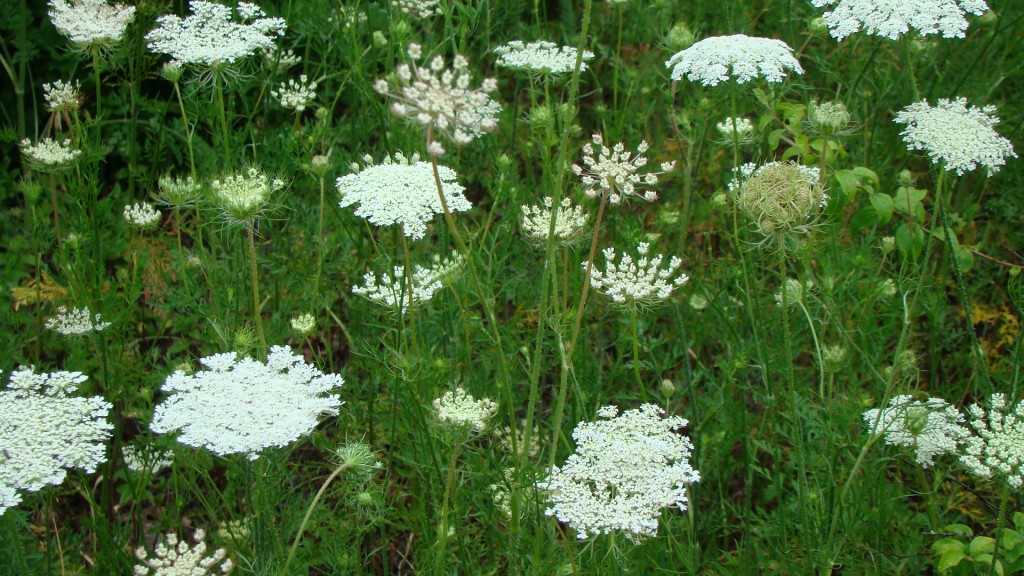


List some of your favorite things. Go ahead. Here are mine:
There might possibly be a movement afoot, Reader. There might possibly be an exciting, easy partnership developing. Among people who are the kind of people who simply get along and trust one another and want to work together. For a greater good than if we worked alone.
This movement of like-minded and why-not-us people reminds me of what’s happening in the once-neglected space behind Eli’s BBQ. We’re all sort of squatting together in an urban lot…the gardener, the orchardist, and the beekeeper. And it’s so awesome we can hardly stand it.
This new movement will be organized yet flexible. We’ll think about it. But we’re moving forward as we think. And we’re not squatting. We belong here. It’s all arranged.

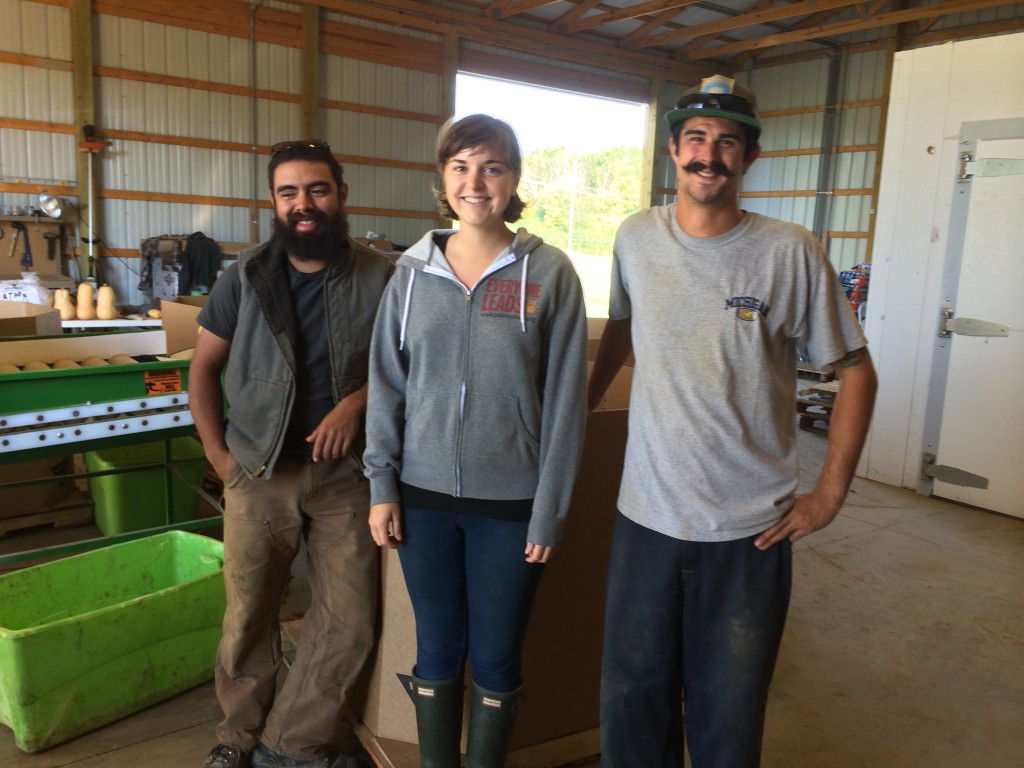


Murphy doesn’t love bees. But he loves to go. He loves to go in the truck and hang his head out the window. Today, when I stopped for an iced tea and left Murph waiting in the truck, a small crowd of women gathered around them. When I returned with my iced tea, they were all snapping pictures.
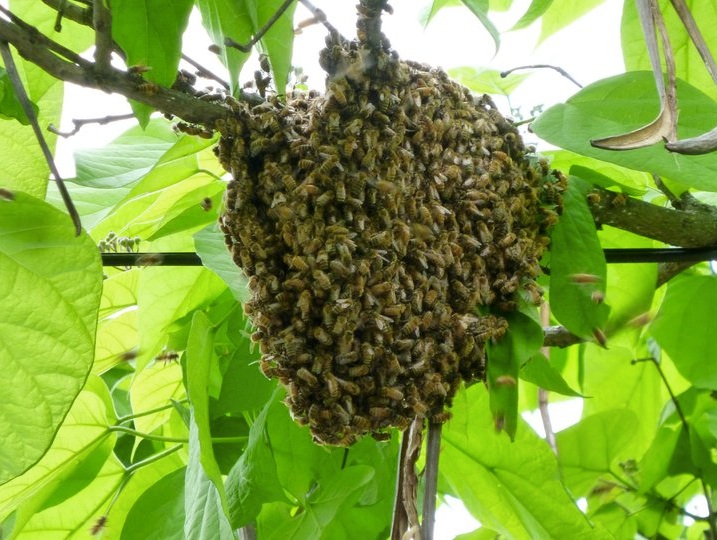

Mother’s Day marks an exciting time for beekeeping in Ohio, Reader—it is now officially swarm season. So, if you’ve discovered a swarm of honeybees hanging in a tree or in a bush or on a lamppost or in some other unexpected place, please please please contact TwoHoneys. If your swarm is at all reachable, we’ll come right over and collect it (and if I can’t personally run right over, I know people who can).
We’ll then take your swarm to one of our bee yards where we’ll introduce it to a nice, dry, comfortable hive box where the bees will immediately begin to set up housekeeping and collecting nectar from our local flora.
In a time of unprecedented bee losses, Reader, the swarm you discover is the sign that something is right in the world. :) A swarm at this time of year indicates that a strong hive near you successfully overwintered in a snug location and has outgrown its space. The swarm you’ve discovered is the sign of a strong hive…I call it a “survivor hive.” And all smart beekeepers want local, survivor hives…these survivor genes are those we hope to propagate in order to develop hardy bees that can withstand Ohio winters and forage on Ohio flora.
A swarm is a gift to the world, Reader. And it has come to you. How wonderful is that?!
Reader, yesterday I received a call from a reporter at WCPO’s Channel 9, Cincinnati’s local news station. Cierra Johnson asked if she could visit with me about the terrible effect the winter-of-the-polar-vortices had on the local bee population.
I was on my way to check on some bees when she called, so I invited Cierra to join me, and she did. We had a very nice time among the bees, and Cierra put together quite a nice story…which ended up being more about the effects the lack of good foraging has on the bee population. Which was a terrific adjustment on Cierra’s part, because she got it. She understood that the lack of a rich food supply is much more devastating for the bees than the cold. If they have enough food, Reader, the frigid temperatures shouldn’t be an issue.
I liked that when the piece came together on TV, the Channel 9 anchors kept calling me “Tilton.”
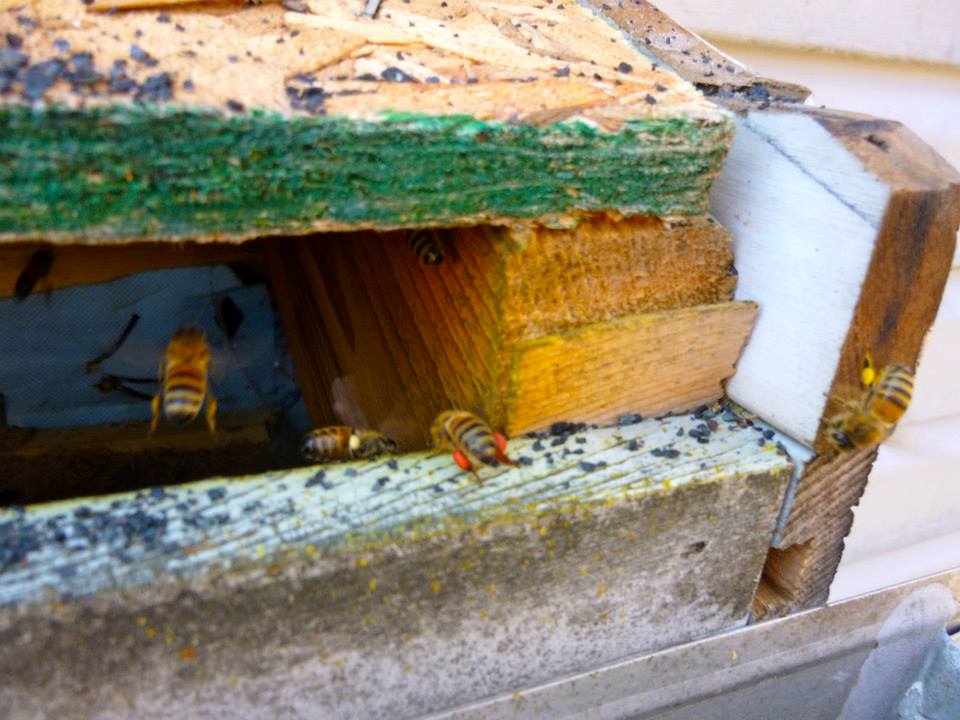
It was a beautiful day for a bee removal, Reader. And because it’s been an long and vicious winter since our last one, I thought it might perk you up to see our happy team at work together on a roof.
Two years ago, the homeowners who hired us watched as a swarm of honeybees moved into their roof through this gap. But because the hive is on the second floor, the bees weren’t a problem until the homeowners built a two-tiered deck. Now the family wants to utilize their second-story deck, and the bees make it difficult for them to relax there.

Terry Evans—who works for Jerry Hof, our brilliant contractor—removed the shingles, the siding, and the chipboard in order to access the hive. Terry worked methodically and thoughtfully to expose the hive without destroying the existing structure. His careful work paid off once the bees were gone and it was time to replace all the parts…the reconstruction took much less time than the deconstruction, and now the space looks as if neither we nor the bees were ever there.

We flipped the chipboard with much of the empty comb still attached. The comb heavy with honey and brood and bees, however, collapsed into the soft insulation.
You know, Reader, I have to tell you how much I love working with Nicola Mason. She will scamper onto a roof or shinny up the scaffolding. She will dig her arms deep into dark and mysterious bee- and honey-filled cavities. And she does it with such glee and energy that she fills me with glee and energy, too. She is a giver of enthusiasm.
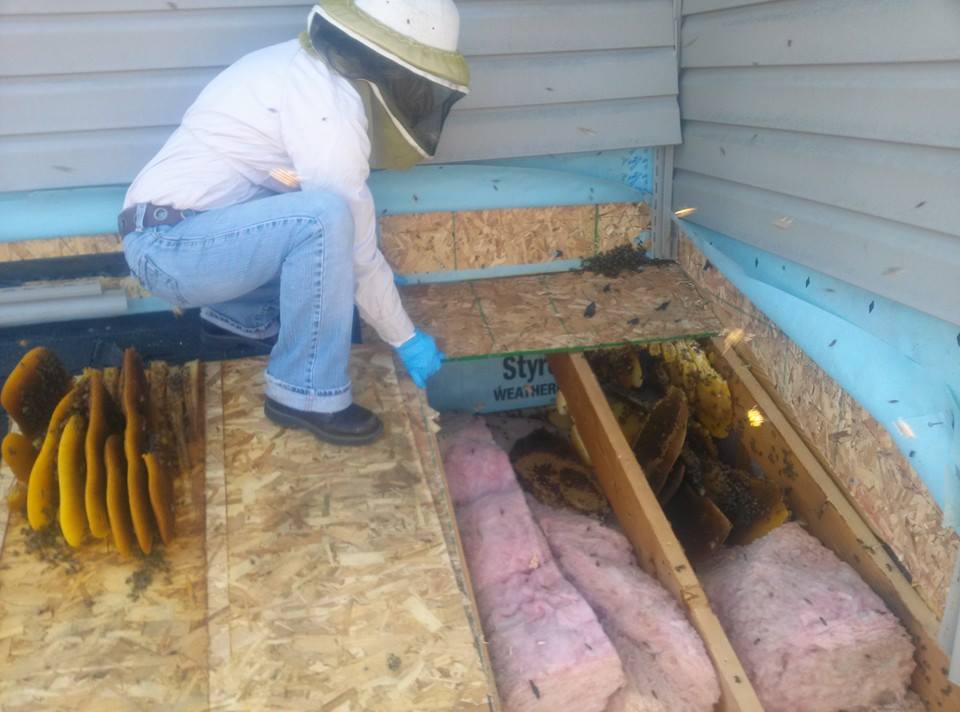
Once we’ve exposed the hive and accessed the comb and bees, we begin removing one comb at a time. We determine where each comb should go in its new hive…and we also always always keep a sharp eye out for the queen.
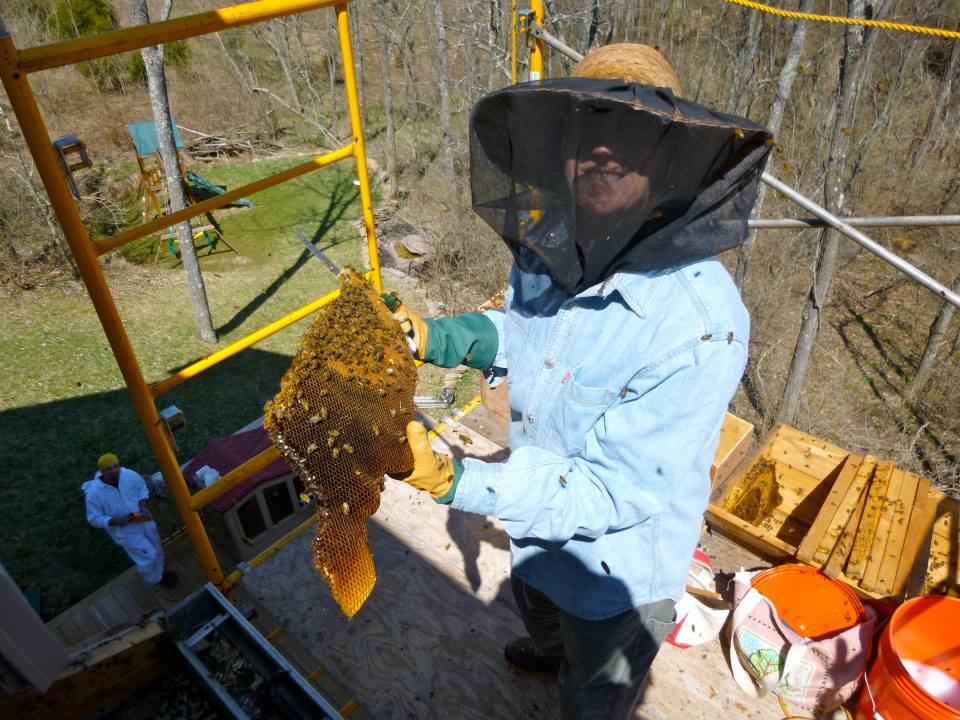
It’s not easy to spot the queen in the chaos of a bee removal, Reader, but we’ve become rather adept at it. On this job, Nicola took responsibility for cutting and removing the bee-laden comb from its original location. After a while, she quietly and matter-of-factly said simply, “I see her.” Then she calmly removed her queen clip from the pocket of her shirt and collected the queen in it.
Capturing the queen guarantees the removal’s success because all the other bees will follow the queen’s pheromones…there is no more chaos or indecision. Wherever she goes, they go.
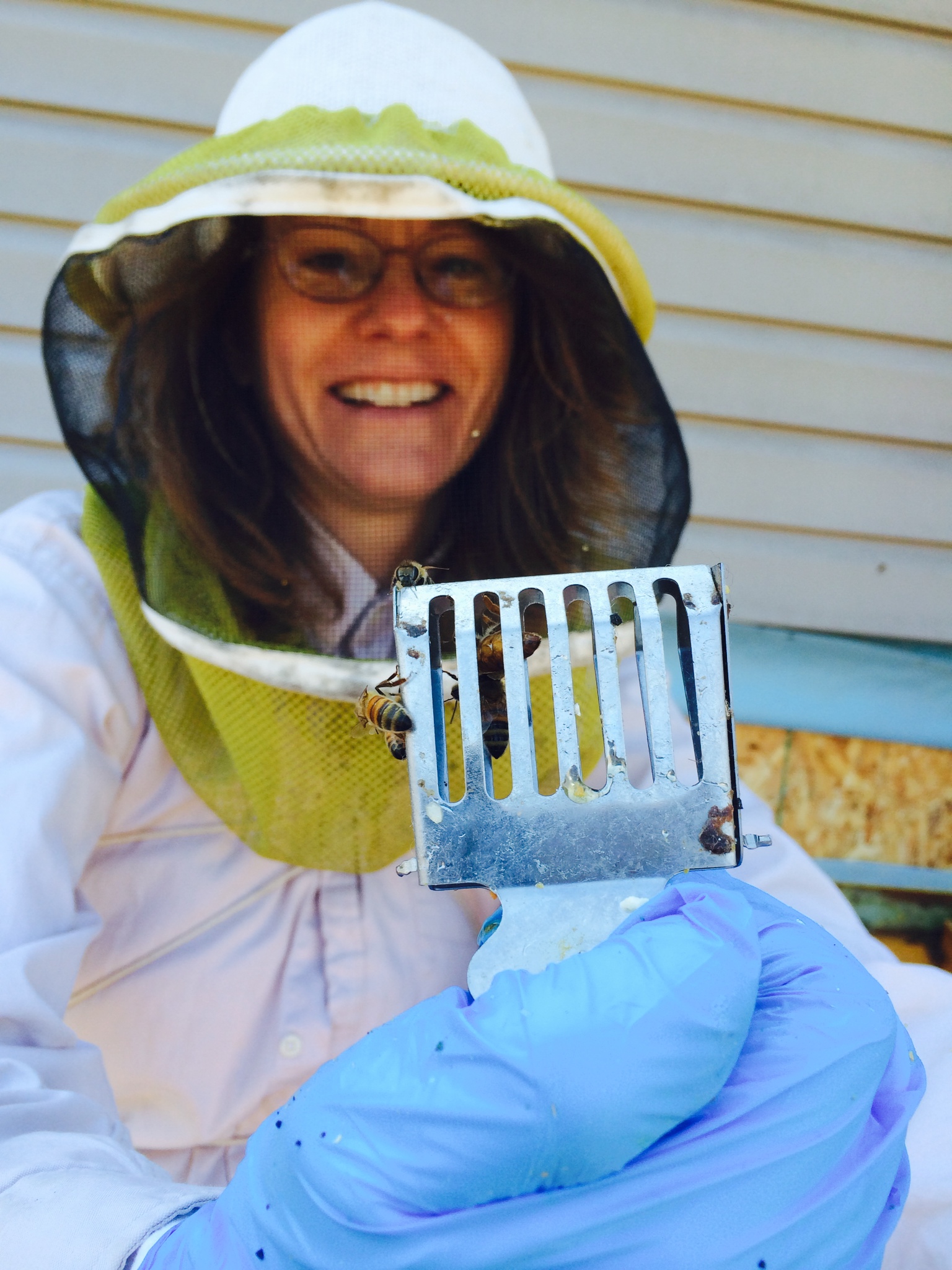
We catch the queen in this clip (which keeps her from flying away) and then attache the clip to a bar with rubber bands. This way, the worker bees will go into the hive where we place the queen.
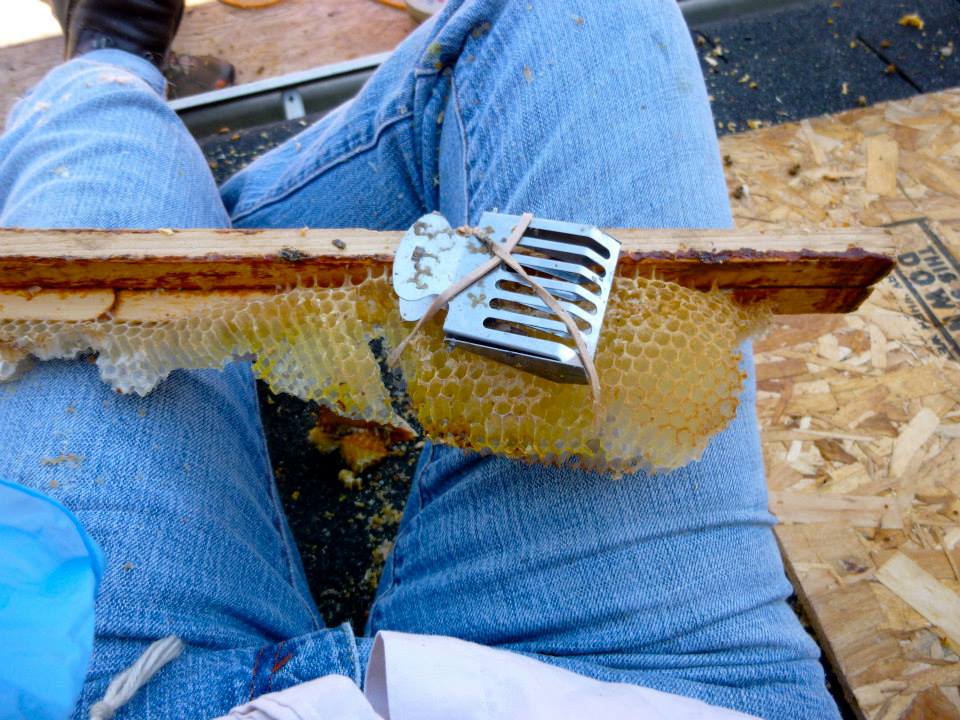
You know, sometimes you simply have to stop and look around and wonder how you got to be so lucky—lucky to be high up on scaffolding on a beautiful day with nice people and a hive of honeybees. Especially after you’ve got the queen, and all is well.
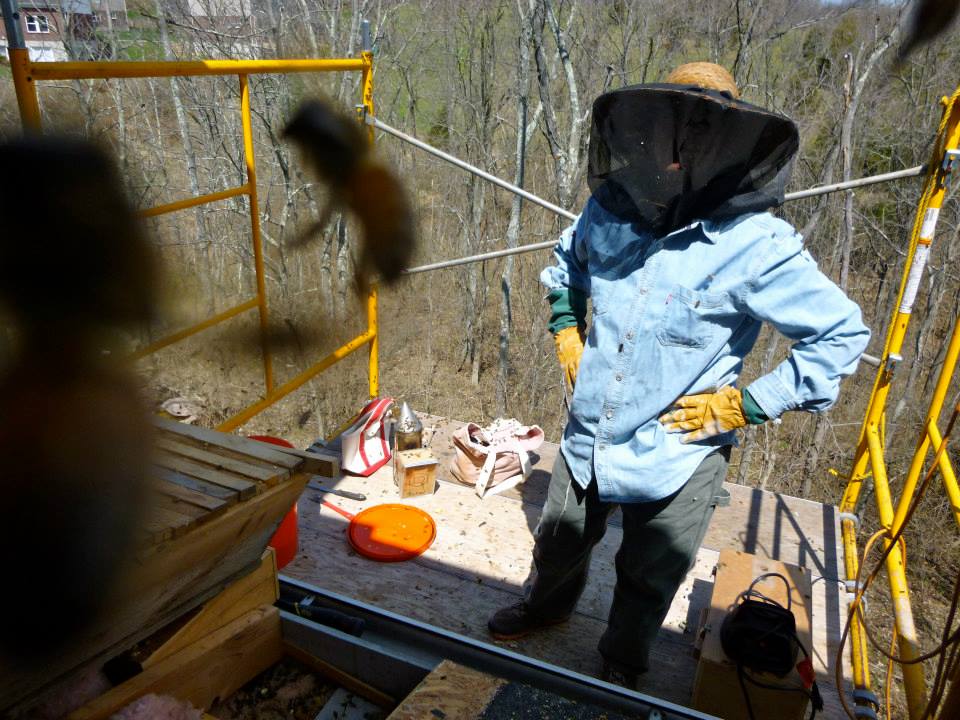
Some bees are reluctant to go into the box…once the queen’s in there, they’ll eventually find their way to her, but we can’t always just sit around and wait for that to happen. Which is why it’s good to have a bee vac on hand. We vacuumed the reluctant bees and reunited them with their sisters when they reached their permanent home.
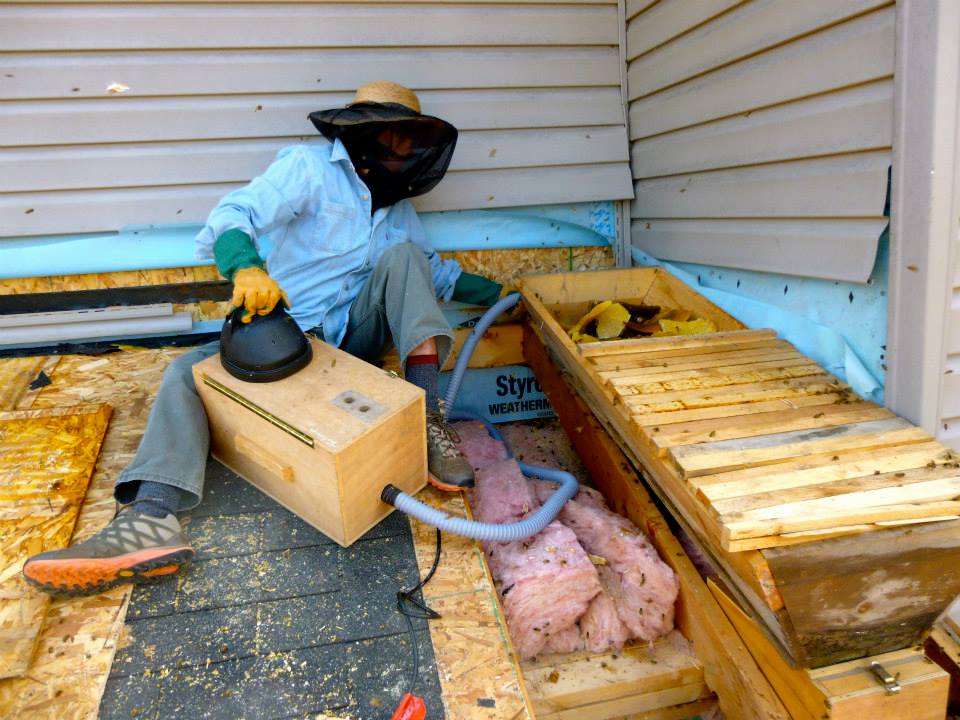
Once we vacuumed the stragglers and sprayed the area with bee repellant, we closed the hive and lowered it to the ground for transport to its permanent home.

And after a nice drive in the bed of a gorgeous pickup truck, the Alexandria hive reached her permanent home. The bees are now busy exploring their new neighborhood.
